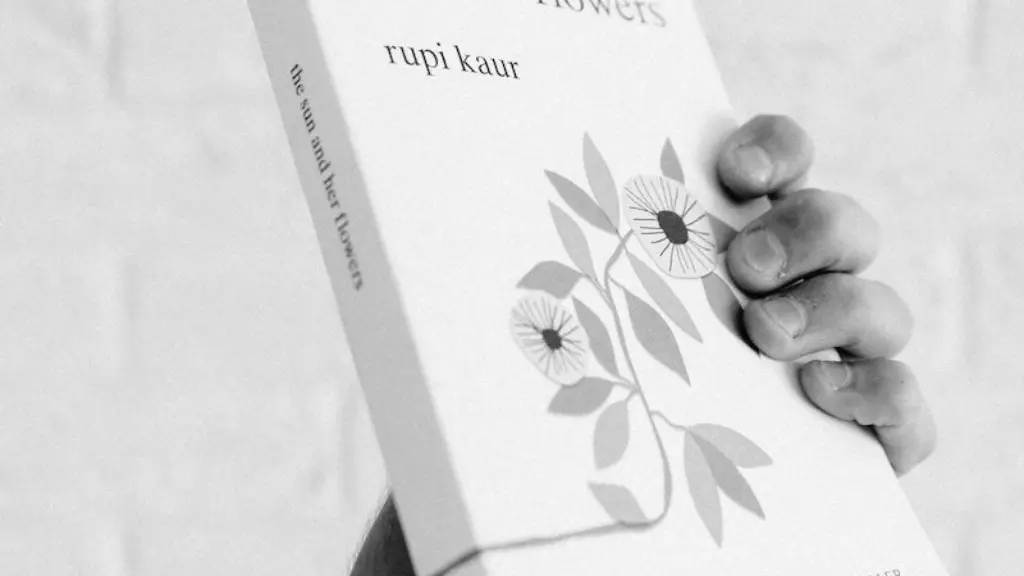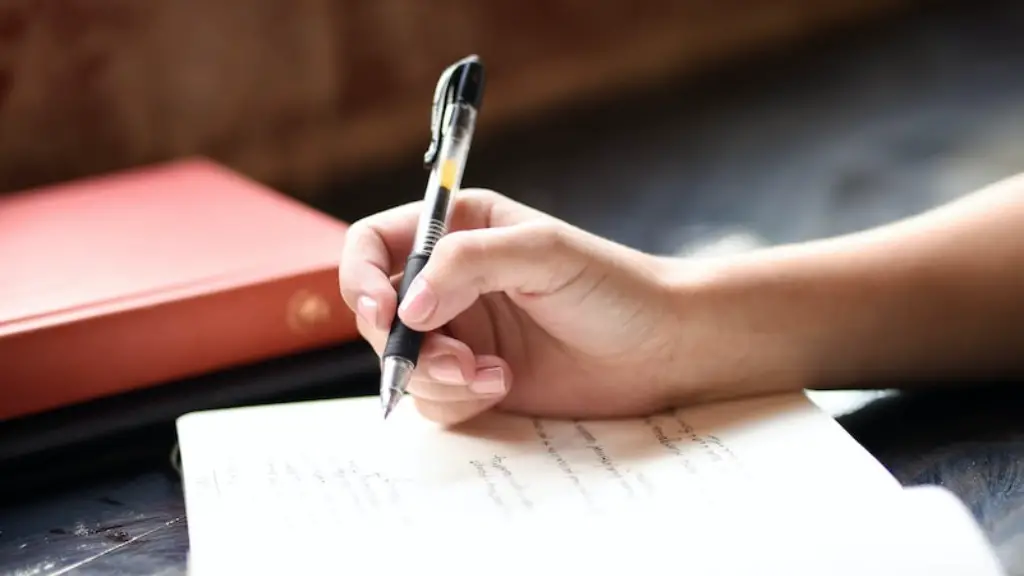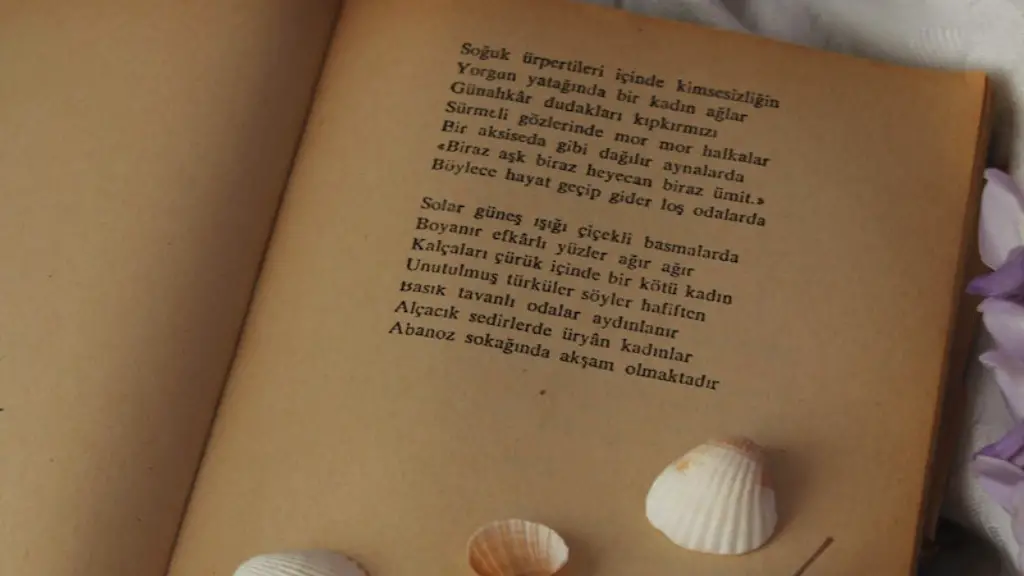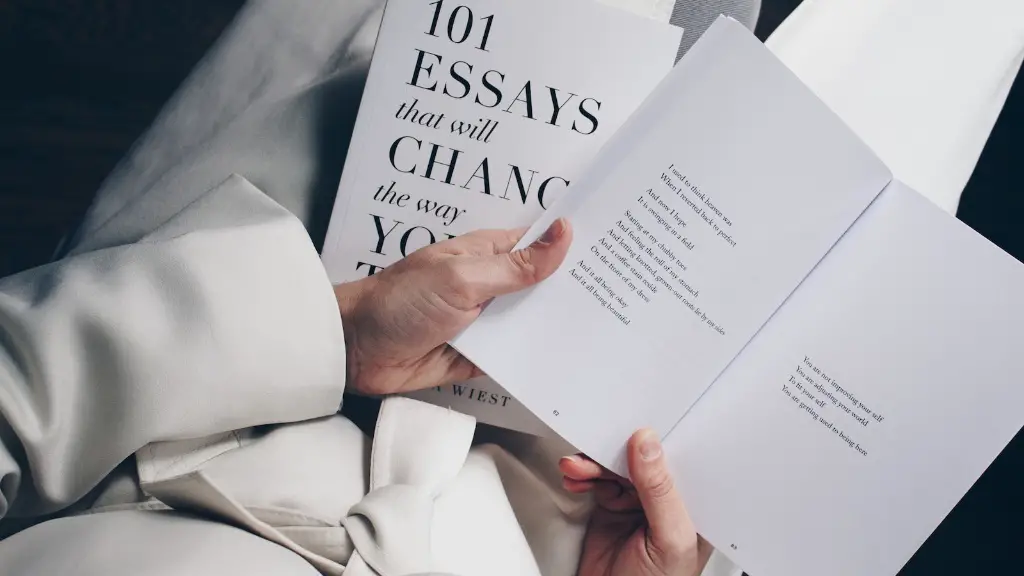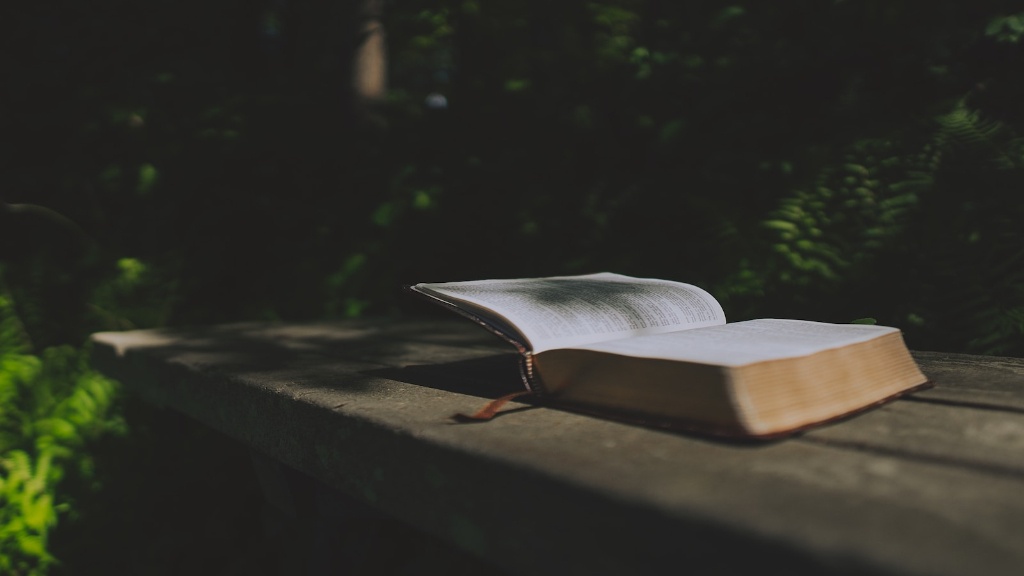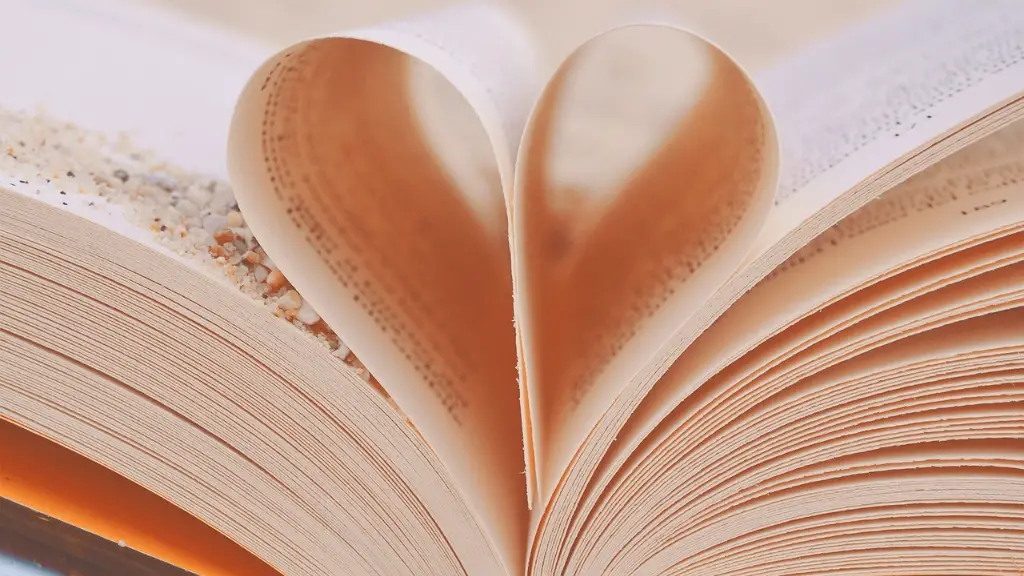Lyrical Poetry
Lyrical poetry is one of the most popular forms of poetry. It is characterized by its emotional language, as its purpose is usually to convey strong emotions and feelings. Lyrical poetry often follows certain patterns in its structure, such as a regular number of lines, syllables per line, and a rhyme scheme. Examples of lyrical poetry include odes, sonnets, and haikus.
The ode is a classic example of lyrical poetry. It is a type of poem that praises and commemorates a particular event or person. An ode typically incorporates an intricate structure, with multiple stanzas that contain praise and admiration for the object of the composition. Odes can also include mythical references, metaphors, and allusions. For example, an ode to a beloved pet could contain allusions to classical mythology, such as comparing the pet to a god or goddess.
Sonnets are a type of lyrical poem that originated in Italy during the Renaissance era. They are typically composed of fourteen lines, with a specific rhyme scheme of abab cdcd efef gg. Sonnets frequently use iambic pentameter, which is a rhythmic pattern that consists of five pairs of two syllables — an unstressed syllable followed by a stressed syllable. Sonnets can be used to express a variety of emotions, but they are most commonly used to express passionate love, both for a person and for an ideal.
A haiku is a short lyrical poem that originated in Japan. It follows a specific structure of three lines, with the first and third lines having five syllables and the second line having seven syllables. Haikus typically focus on nature and/or evocative emotional experiences. A haiku often manifests itself in collective thought, with its purpose being to evoke a sense of meditation in the reader.
Narrative Poetry
Narrative poetry is composed with the aim of telling a story. It is typically composed in a narrative form and has a clear beginning, middle, and end. Narrative poetry often incorporates traditional poetic devices such as rhyme, meter, and stanza structure. Additionally, narrative poetry frequently follows the patterns of epic poetry, which follows a clear hero’s journey, such as the epic of Gilgamesh.
Ballads are a type of narrative poem that is characterized by its simple and direct language. Ballads typically include elements of folk music and often recount stories of love, loss, adventure, and heroic feats. Because of their simple language and emotional appeal, ballads often become popular in oral tradition.
Epics are a type of narrative poem that is typically long and detailed. An epic typically tells a story of a hero on a grand quest, and often includes battles, supernatural creatures, and mythical elements. Epics often include repetition of phrases in order to emphasize the grandiosity of the hero’s deeds.
A lay is a type of narrative poem that traditionally told stories of adventure and courageous deeds. It was typically composed as a form of entertainment and often included legends or historical events. In some cases, a lay could be performed as a form of theatre, where the story could be communicated to a larger audience.
Descriptive Poetry
Descriptive poetry is composed with the intention of creating a vivid picture in the reader’s mind. Descriptive poetry relies heavily on the use of figurative language, such as metaphors and similes, to convey a sense of beauty, emotion, and sensory detail. Descriptive poetry resembles other forms of creative writing in that it is composed with the aim of entertaining the reader and evoking a strong emotional response.
The ekphrasis is a type of descriptive poem that is composed in response to a work of art. Ekphrasis is often composed with the intention of illuminating the visual experience of viewing a painting, sculpture, or other visual artwork. An ekphrasis often utilizes vivid language to recreate the experience of viewing a piece of artwork, which can be both challenging and rewarding for the poet.
The ode provides another type of descriptive poetry. As mentioned earlier, the ode is a type of poem that is composed to praise and commemorate a particular event or person. However, unlike other forms of lyrical poetry, an ode typically takes a descriptive approach, utilizing imagery and metaphor to paint a vivid picture of the object of the poem.
The hyperbole is a type of exaggerative description that is often used in descriptive poetry. Whereas a metaphor is a comparison between two objects or ideas, the hyperbole uses exaggerated language to describe a situation or emotion. For example, a poet may use the phrase ‘as light as a feather’ to emphasize a feeling of lightness, or ‘as hungry as a bear’ to emphasize the intensity of hunger.
Concrete Poetry
Concrete poetry is a relatively recent form of poetry that has its roots in the visual arts. Unlike traditional poetry, concrete poetry often takes a visual form and explores the interplay between words and images. In essence, concrete poetry is composed with the intention of creating miniature works of art.
Visual poetry is a type of concrete poetry that relies heavily on graphic elements. Visual poetry can be composed on any number of materials, from paper to canvas, and often utilizes an array of different visual mediums such as photography, collage, and illustration. Visual poetry frequently incorporates repetition and symbolism, creating a unique visual language.
Typographical poetry is another subcategory of concrete poetry. As the name suggests, this type of poetry takes the form of text, often altering the physical shape of the poem’s letters and words in order to create a visual representation that conveys an idea or emotion. Typographical poetry often utilizes repetition, fragmentation, and distortion of language to create an impactful visual message.
Found poetry is a type of cut-up poetry in which words and phrases are taken from existing texts and rearranged to create a new poem. Found poetry can take a variety of forms, from single words to entire phrases. It often incorporates humorous juxtapositions or double entendres, which can create unexpected connections between disparate topics.
Experimental Poetry
Experimental poetry is a type of poetry that takes a deconstructive approach to traditional poetic forms. In experimental poetry, words and phrases are often combined and rearranged in order to create new and unexpected meaning. Experimental poetry often challenges conventions of language and meter, creating unexpected effects and perceptions.
Language poetry is a type of experimental poetry that relies heavily on fragmentation, juxtaposition, and reinterpretation of language. Language poetry often takes the form of a collage, with words and phrases taken from different sources and rearranged to create a new meaning. This type of poetry often resists traditional meter, grammar, and syntax, creating works that are inherently unsettling and surreal.
Sound poetry is a type of experimental poetry that incorporates both sound and language. It often involves the use of unconventional techniques such as speaking in a different accent, making unusual vocalizations, or incorporating instrumental sounds. Sound poetry often focuses on the auditory experience, sacrificing traditional poetic conventions in order to create a more immersive experience.
Visual poetry is a type of experimental poetry that combines visual elements with spoken language. Visual poetry often employs syllables, repetition, displacement, and fragmentation in order to create visual and auditory effects. As with other experimental forms of poetry, visual poetry is highly malleable, allowing for a range of creative expression that often result in unexpected conclusions.
Performance Poetry
Performance poetry is a type of poetry that is composed for an audience rather than a page. This type of poetry is often accompanied with additional visual effects, such as props, hand gestures, and costumes, creating a unique immersive experience for the audience.
Slam poetry is a type of performance poetry that is popular in the United States. In a slam poetry performance, poets are judged by members of the audience on their delivery, originality, and the content of the poem. Slam poets often write pieces that are shorter and more direct than other forms of poetry, allowing the poet to deliver their message quickly and effectively to their audience.
Poetry slams are also popular in the UK and Europe. A poetry slam usually involves 10-20 poets performing poems on a particular theme. These performances are then judged by a panel of 5-7 judges, and the winners are awarded prizes. Poetry slams offer an audience an opportunity to engage with the poets and show their appreciation for their work.
Spoken word poetry is another form of performance poetry. Spoken word poets use their craft to engage directly with their audience. Spoken word performances often include political and social messages, as well as personal reflections on the lives and struggles of the poets. Spoken word poets often incorporate elements of storytelling, direct address, and a range of vocal techniques to create a unique and impactful performance.
Hybrid Poetry
Hybrid poetry is a type of poetry that combines elements of traditional poetry with experimental techniques. These techniques often defy traditional poetic conventions and rules, resulting in poems that are unique and unpredictable. Hybrid poetry often consists of out-of-the-box experimentation with language, emotion, and form.
Postmodern poetry is a type of hybrid poetry that seeks to challenge conventions of language and meaning. Postmodern poets often draw from a range of sources, such as popular culture, media, and historical texts, in order to create works that are both insightful and thought-provoking. Postmodern poetry often involves the use of irony and parody, creating works that are both clever and unexpected.
Dadaist poetry is a type of hybrid poetry that seeks to create a sense of absurdity and randomness through its use of juxtaposition and fragmentation. Dadaist poets often employ surrealist techniques, creating works that can be interpreted in a variety of ways. This type of poetry often utilizes a wide range of incongruent elements, creating works that are simultaneously humorous and thought-provoking.
Collage poetry is a form of cut-up poetry in which words and phrases are taken from existing sources and rearranged to create a new poem. Collage poetry often utilizes the juxtaposition of ideas from different fields and genres, allowing for unique connections and interpretations. Collage poetry can be used to explore a variety of topics, from personal reflections to philosophical examinations.
